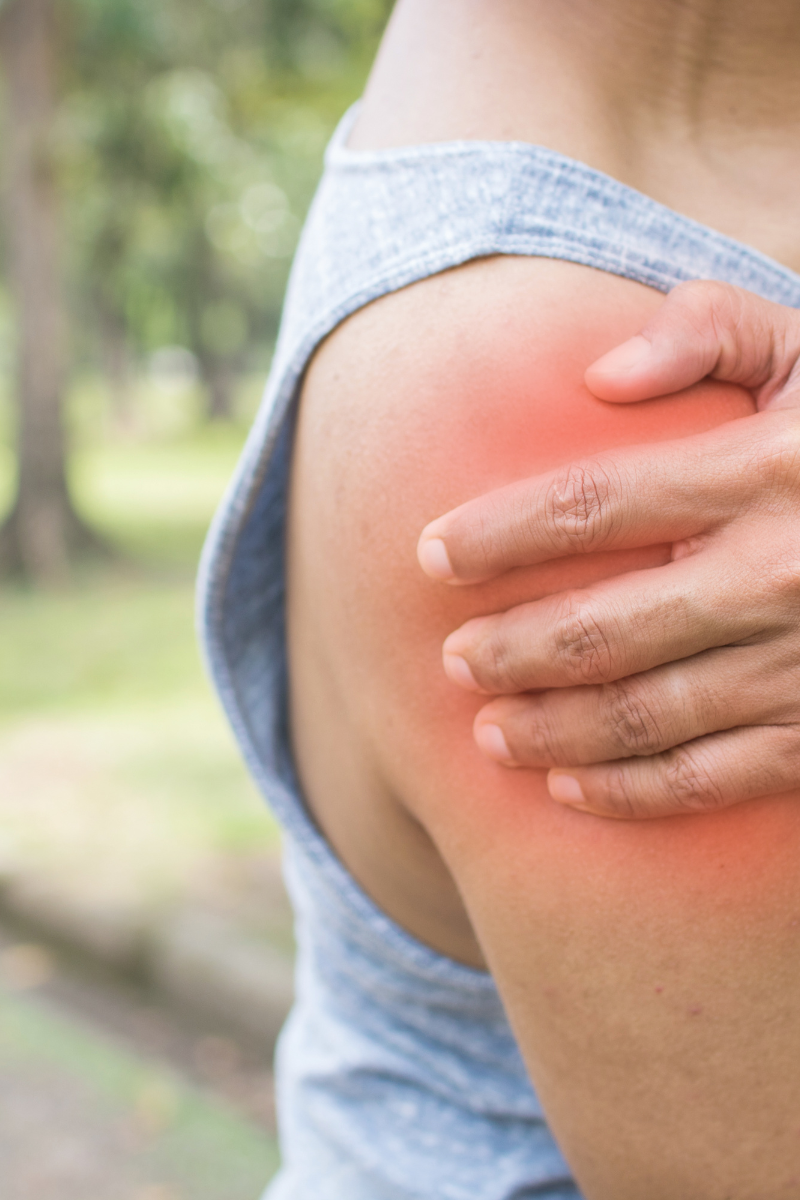What is the Rotator Cuff?
The rotator cuff is a group of four muscles and their tendons located around the shoulder joint. These muscles—supraspinatus, infraspinatus, teres minor, and subscapularis—work together to stabilise the shoulder joint and facilitate a wide range of motion. The rotator cuff plays a vital role in lifting, rotating, and moving the arm, making it essential for everyday activities and sports performance.
Types of Rotator Cuff Tears
Rotator cuff tears can occur gradually over time due to wear and tear or suddenly as a result of injury. There are two main types of tears:
- Partial Tears: In partial tears, only a portion of the tendon is damaged. This type of tear only goes partially through the thickness of the tendon. This type of tear may not completely disrupt the function of the rotator cuff and may be less symptomatic.
- Full-Thickness Tears: With this type of tear, there is detachment of part of the tendon from the bone.When only a small part of the tendon is detached from the bone, it is referred to as a full-thickness incomplete tear. When a tendon is completely detached from the bone, it is referred to as a full-thickness complete tear. With a full-thickness complete tear, there is basically a hole in the tendon. This type of tear can significantly impact shoulder function and may require surgical intervention for repair.
Causes of Rotator Cuff Injuries
Understanding how the rotator cuff is typically injured is crucial for prevention and effective management. Rotator cuff injuries can result from various factors, including:
- Overuse: Repetitive overhead activities, such as throwing, lifting, or reaching, can place excessive strain on the rotator cuff muscles and tendons, leading to gradual wear and tear over time. Athletes involved in sports such as baseball, tennis, and swimming are particularly prone to overuse injuries of the rotator cuff.
- Trauma: Acute trauma, such as a fall onto an outstretched arm or a direct blow to the shoulder, can cause sudden tears or strains in the rotator cuff tendons. These injuries are common in accidents, sports-related collisions, or activities involving sudden forceful movements.
- Age-related Changes: As we age, the tendons of the rotator cuff may degenerate and become more susceptible to injury. The gradual weakening of the tendon structure, coupled with decreased blood flow and tissue elasticity, increases the risk of tears and impingement in older adults.
- Muscle Imbalances and Weakness: Weakness or imbalance in the muscles surrounding the shoulder joint, including the rotator cuff and scapular stabilisers, can disrupt the dynamic stability of the shoulder and increase the risk of injury. Muscle imbalances may develop due to poor conditioning, sedentary lifestyle, or previous injuries.
Management of Rotator Cuff Tears
The management of rotator cuff tears depends on various factors, including the severity of the tear, the patient's age, activity level, and overall health. Treatment options may include:
- Physiotherapy: Physiotherapy plays a crucial role in the management of rotator cuff tears. A skilled physiotherapist can design a personalised rehabilitation program to strengthen the muscles surrounding the shoulder joint, improve range of motion, and reduce pain. Through targeted exercises and manual therapy techniques, physiotherapy aims to restore function and prevent further injury.
- Some other options (to be used with physio, not instead of): In cases of mild to moderate rotator cuff tears, conservative treatments such as relative rest / de-loading, ice, anti-inflammatory medications, and corticosteroid injections may be recommended to alleviate pain and inflammation.
- Surgical Intervention: For severe or full-thickness rotator cuff tears that do not respond to conservative treatments, surgical repair may be necessary. During surgery, the torn tendon is reattached to the bone, either arthroscopically or through open surgery.
How we can help
Numerous studies have demonstrated the effectiveness of physiotherapy in the management of rotator cuff tears. A systematic review published in the Journal of Orthopaedic & Sports Physical Therapy found that conservative treatments, including physiotherapy, were effective in improving pain and function in patients with rotator cuff tears. Physiotherapy interventions, such as progressive strengthening exercises, manual therapy, and therapeutic modalities, have been shown to enhance shoulder strength, mobility, and overall function, leading to improved patient outcomes and satisfaction. For this reason, we alway recommend starting management of your rotator cuff injury with physiotherapy first. We can often achieve a lot over a 6-12 week rehabilitation program. We have saved countless numbers of people from having surgery.
Rotator cuff tears can significantly impact shoulder function and quality of life. While surgical intervention may be necessary in severe cases, physiotherapy remains a cornerstone of conservative management, offering safe, non-invasive interventions to improve pain, function, and overall shoulder health. If you're experiencing shoulder pain or suspect a rotator cuff tear, consult with our physiotherapy team for an accurate diagnosis and personalised treatment plan.
